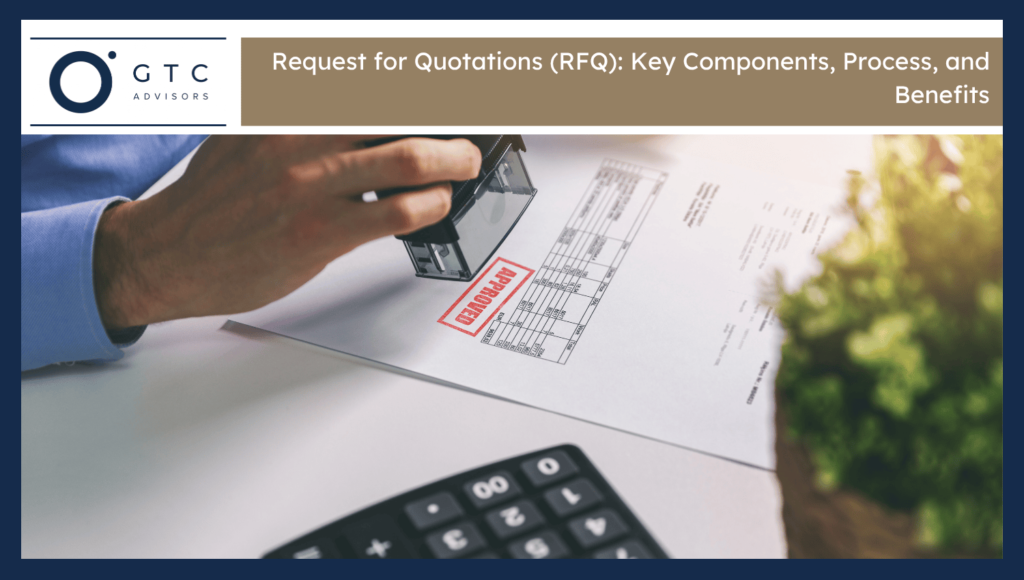A Request for Quotation (RFQ) is an official process. It is used to collect price quotations. The goods or services need to be clearly described. RFQs are good, especially where specifications are fixed. They assist in getting competitive rates. Suppliers are invited only on a qualifying basis. This makes responses dependable. RFQs have a primary focus on cost. The most affordable one is frequently the preferred. They are quicker than RFPs. It involves less assessment. RFQs are applied to regular purchases. They minimize the time of procurement, and the procedure is direct. This makes it easier for buyers to compare offers. RFQs are used in both the public and the private sectors.
When is an RFQ Used?
The following are the 4 common situations when an RFQ is used:
For Routine Purchases
RFQs apply to the regular purchases. These are office supplies, maintenance equipment and standard equipment. The requirements are stable and consistent. Customers are informed about what they require.
Low-Value Procurement
RFQs are utilised for small and low-value purchases. These take shorter times to process. There is a low risk. The approvals are usually quicker.
Well-Defined Requirements
RFQs perform well in candidate situations where product requirements are clear. The specifications are familiar. There is no design required or customisation. Technical details are very limited.
Time-Sensitive Needs
RFQs are useful when a time-sensitive case occurs. They can achieve a faster turnaround. Tenders are received quickly. Order placements are made free of delays.
What are the Key Components of an RFQ Document?
The following are the six essential components found in a standard RFQ document:
Item Specifications
Use the name of the product or service. Provide quantity, size, volume, technical details and quality to the product specification. Include additional, special instructions, as necessary. It can enable the suppliers to know specifically what the buyer requires.
Delivery Terms
Give the delivery address, estimated delivery date and how you are going to handle it. Cover the requirements of packaging and delivery schedules. State what happens when there are delays or damages after goods or services have been delivered as per the requirement.
Pricing Format
Make sure that unit prices are easily readable. Add taxes, total amount and discounts. Keep a uniform pricing plan. It makes all quotes consistent and readily compared among various vendors.
Payment Terms
Make the payment due date specific. Add methods of accepted payment and documents required. List net payment terms, or even early payment incentives. It ensures that the financial process is agreed upon by both parties.
Submission Guidelines
Determine the deadline and form of the quote. Write about the way of submitting and the documents required. Put information regarding contact for inquiries. It supports transparent communication and on-time communication with the suppliers.
Contract Terms (Optional)
Provide a rule regarding returns, warranty, and legal terms. Include dispute resolution procedures and tasks. These assist in establishing requirements if a buyer includes terms following the completion of the order.
What are the Steps for the RFQ Procurement Process?
Here are the seven steps that outline how the RFQ process is normally carried out from start to finish:
Identify Needs & Specs
Select the kind of goods or services that are needed. Clarify technical requirements, buy, quality and delivery requirements. It is the basis of the procurement process and influences the RFQ document.
Prepare RFQ Document
Make a detailed RFQ. Add items, including text descriptions, submission due dates, pricing format, and terms. Complete and easy-to-understand information makes suppliers aware of what is required and helps them respond in the correct way.
Invite Suppliers
Make it to a limited number of pre-qualified suppliers with an RFQ. Select suppliers that are aligned with your demands, quality, price and delivery. The concentrated list enhances the quality of responses and increases the rate of assessment.
Receive Quotations
The formal quotes are submitted by suppliers within the required period. These are quotations prepared in the required style. All terms, pricing, and particulars are presented systematically.
Compare Quotes
Compare all quotations with one another. Compare using the foundation of price, quality, lead time and payment terms. This stage assists in determining the most favourable value offer across suppliers.
Select Supplier
Choose the supplier with the best and comprehensive quote. It is to be selected based on a fit basis with the specifications, delivery terms, and the pricing structure.
Issue Purchase Order (PO)
An official purchase order is delivered to the identified supplier. It clarifies the order details, price and delivery expectations. The PO is the one who allows the purchase to proceed legally.
What are the Benefits of RFQs?
Below are the 6 key advantages of using RFQs in procurement:
- RFQs have a fast turnaround since suppliers are more responsive when requirements are well defined.
- They are also cost-effective, and the buyers can receive competitive prices without much negotiation.
- The procedure also facilitates easy comparison of prices and simplified evaluation using structured formats.
- RFQs are automation-capable, and they are easy to manipulate using procurement software or ERP.
- They minimise administrative work and have a low burden of work and need little input from procurement teams.
- It is very transparent and fair since the rules are always the same and the competition is open.

George C. Tagg, Jr.
George serves as a trusted counsel to business leaders, non-profit executives, and management teams. George is a licensed attorney with a master’s in international affairs and over 20 years’ experience in the U.S. Congress, Department of State, Department of Defense, global public policy, and political campaigns.


